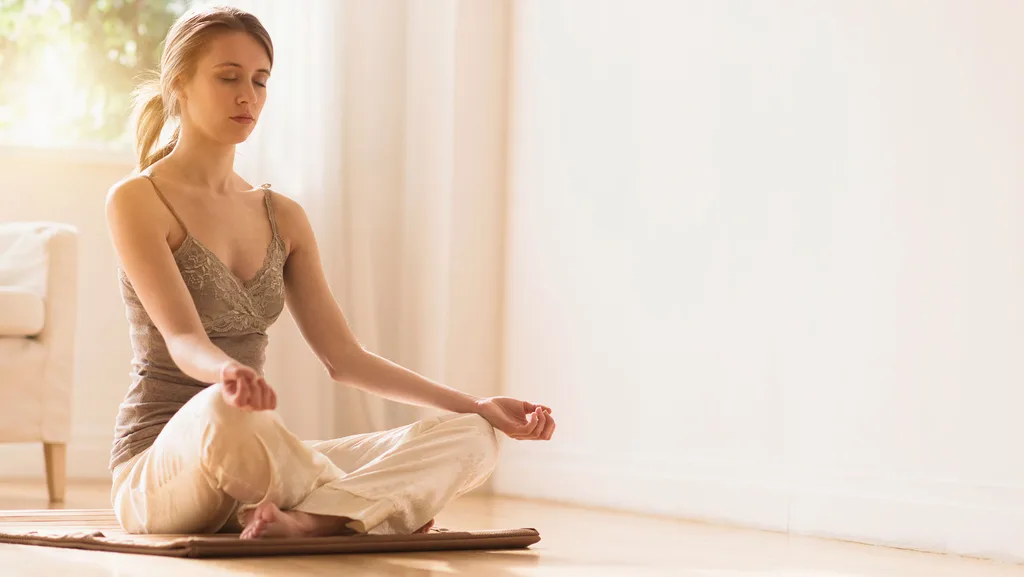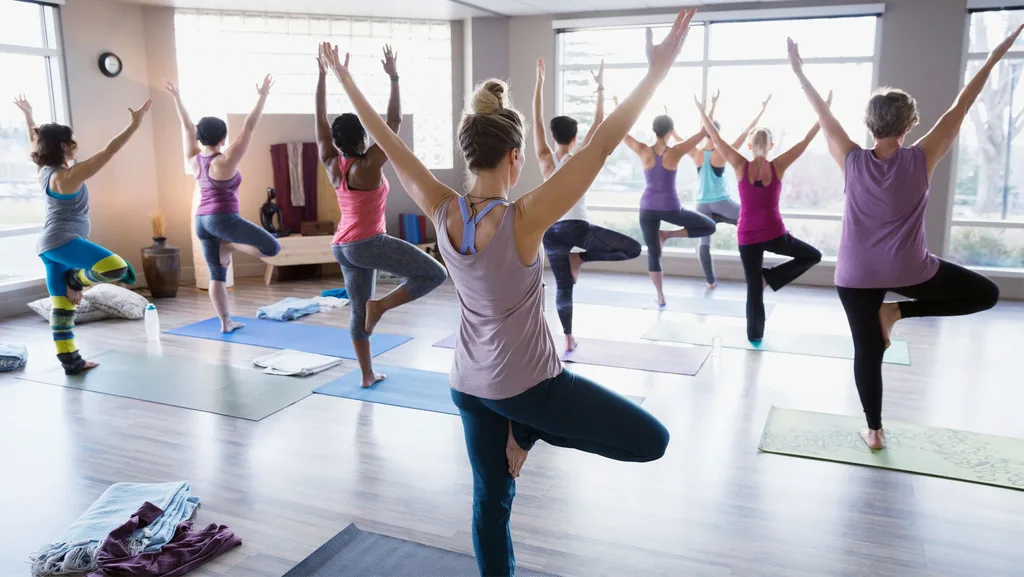While yoga is often dismissed by boot-camp goers as being ‘too easy’, regular yoga sessions actually offer a handful of physical and mental benefits.
A standard yoga class is usually 45 minutes long and can be made up of three practices: postural poses, meditation and controlled breathing exercises.
The incorporation of breathing and mindfulness exercises may lead some to believe the practice is too alternative, but yoga has been practised for thousands of years for its unique perks – including its reported ability to calm the nervous system and balance the mind and body.

Mental benefits
Just like strength training and cardio target different needs, so does yoga – which is often praised for its numerous positive effects on mental health.
The American Psychological Association recently published a report explaining that a multi-week yoga regime can help lessen symptoms of depression, and is recommended as a complement to traditional therapy.
The paper looked at two studies: the first found that after nine weeks of yoga, participants had reduced symptoms of depression and anxiety and lowered stress levels, rumination and worry.
The second study returned similar results.
Participants reported having an improved quality of life, more optimism, and better physical and cognitive functioning after eight weeks of twice-weekly Bikram or heated yoga classes.
But depression isn’t the only mental issue yoga helps tackle, stress levels are also alleviated.
Alexandra Stafford, founder of Rise Hot Yoga and Pilates, says that by activating the body’s parasympathetic nervous system (the part of us responsible for relaxing the body and slowing the heart rate) we can more be more more present, effectively taking our mind off future or past stressors.
“Yoga switches your body’s nervous system out of sympathetic and into parasympathetic by turning off the flight or fight response that many of us find ourselves slipping into as we face our every day stress.”
“Yoga is a fantastic way to check in with the body. Spending an hour concentrating on breath and movement forces you to focus on the now,” says Stafford.

Physical benefits
The introduction of different types of yoga classes (hatha, iyengar, vinyasa) makes it hard to pinpoint which will help you reach your goals – be it stress relief, flexibility or increased balance.
If more energy is what you’re after, you’ll be pleased to know that a paper published online by the University of Waterloo suggests that Hatha yoga – a term for yoga classes that focus on physical exercises – and meditation increase energy levels.
Lead author on the paper, Kimberley Luu, says “There are a number of theories about why physical exercises like yoga improve energy levels and cognitive test performance.
“These include the release of endorphins, increased blood flow to the brain, and reduced focus on ruminative thoughts.”
Paper co-author and associate professor in the School of Public Health and Health Systems, Peter Hall, says that the benefits don’t stop there.
“Although the meditative aspect might be even more important than the physical posing for improving executive functions, there are additional benefits to hatha yoga including improvements in flexibility and strength.”
As if we needed another reason to invest in a yoga mat; studies have also shown that when paired with aerobic exercise yoga can help reduce cardiovascular morbidity and mortality.



